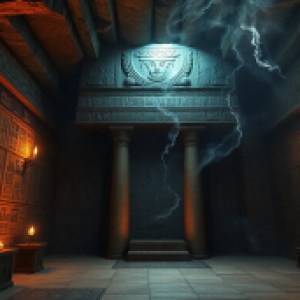The Language of Death: Analyzing Tomb Texts
I. Introduction
Tomb texts are inscriptions found within burial sites that offer invaluable insights into the beliefs and practices surrounding death. These texts serve not only as epitaphs for the deceased but also as windows into the cultural attitudes of a society towards mortality and the afterlife. This article aims to explore the historical context, types, language, and contemporary relevance of tomb texts, shedding light on how language shapes our understanding of death across various cultures.
II. Historical Context of Tomb Texts
The practice of inscribing tomb texts has evolved significantly over time, reflecting the beliefs and values of different civilizations. Key civilizations known for their tomb inscriptions include:
- Ancient Egypt: Renowned for their elaborate tombs and hieroglyphs, Egyptians believed in an afterlife that required guidance through the journey of death.
- Mesopotamia: Tomb texts often included prayers and spells aimed at protecting the deceased in the afterlife.
- Ancient China: Inscriptions on tombs reflected Confucian ideals, emphasizing familial connections and the importance of ancestral worship.
Tomb texts played a crucial role in funerary practices, often guiding the deceased in their journey and providing information for the living about the individual’s life and virtues.
III. Types of Tomb Texts
Tomb texts can be categorized into several types, each serving a distinct purpose:
- Funerary inscriptions and epitaphs: These texts commemorate the deceased, often highlighting their achievements and virtues.
- Religious texts and prayers: Many tombs contain prayers or spells intended to assist the deceased in the afterlife, reflecting the spiritual beliefs of the culture.
- Personal narratives and biographical accounts: Some inscriptions include autobiographical elements, allowing the deceased to narrate their own life story.
IV. Language and Symbolism in Tomb Texts
The language used in tomb texts is rich with symbolism and recurring themes. Common themes include:
- The journey to the afterlife
- Judgment and the weighing of the heart
- Spiritual protection and guidance
Symbolic language often conveys messages about death and the afterlife, such as the use of specific deities or mythological references. For example, in Ancient Egyptian texts, the presence of Anubis, the god of mummification, symbolizes guidance through the afterlife. Analyzing specific examples from various cultures illustrates how language serves to communicate complex beliefs about mortality.
V. The Role of Tomb Texts in Understanding Beliefs about the Afterlife
Tomb texts provide a profound reflection of societal beliefs regarding death. They reveal:
- The importance placed on the afterlife and what it entails
- Rituals performed to honor the dead
- Societal values and priorities, such as the emphasis on legacy and remembrance
Comparative analysis of afterlife concepts across cultures shows both similarities and differences. For instance, while the Ancient Egyptians emphasized a physical resurrection, other cultures might focus more on spiritual continuity. The language of these texts significantly impacts how societies perceive mortality, shaping rituals and memorial practices.
VI. Archaeological Discoveries and Their Impact on Tomb Texts Analysis
Archaeological discoveries have greatly enhanced our understanding of tomb texts. Notable findings include:
- The discovery of the tomb of Tutankhamun, which contained extensive hieroglyphic texts.
- The Rosetta Stone, which allowed scholars to decode ancient Egyptian script.
- Recent finds in Mesopotamia that reveal the complexity of burial practices and inscriptions.
Advances in technology, such as imaging techniques and digital analysis, have further enabled researchers to decode and interpret ancient languages, revealing previously unknown insights into these texts. Significant case studies showcase how these discoveries continue to influence our understanding of ancient beliefs about death and the afterlife.
VII. Contemporary Relevance of Tomb Texts
Today, tomb texts still resonate with modern interpretations of ancient beliefs about death. Their influence can be seen in contemporary memorial practices, including:
- The use of epitaphs in gravestones
- Memorial services that echo traditional rituals
- Cultural heritage initiatives aimed at preserving ancient burial sites
Understanding tomb texts contributes to broader cultural heritage and preservation efforts, highlighting the importance of remembering and honoring the deceased in ways that reflect their historical and cultural contexts.
VIII. Conclusion
In summary, the analysis of tomb texts reveals key insights into how ancient cultures understood and approached death. The ongoing study of these texts is vital for comprehending the language and symbolism that shape our perceptions of mortality. As we continue to explore these inscriptions, we gain a deeper appreciation for the diverse cultural attitudes towards death that have persisted throughout human history.




